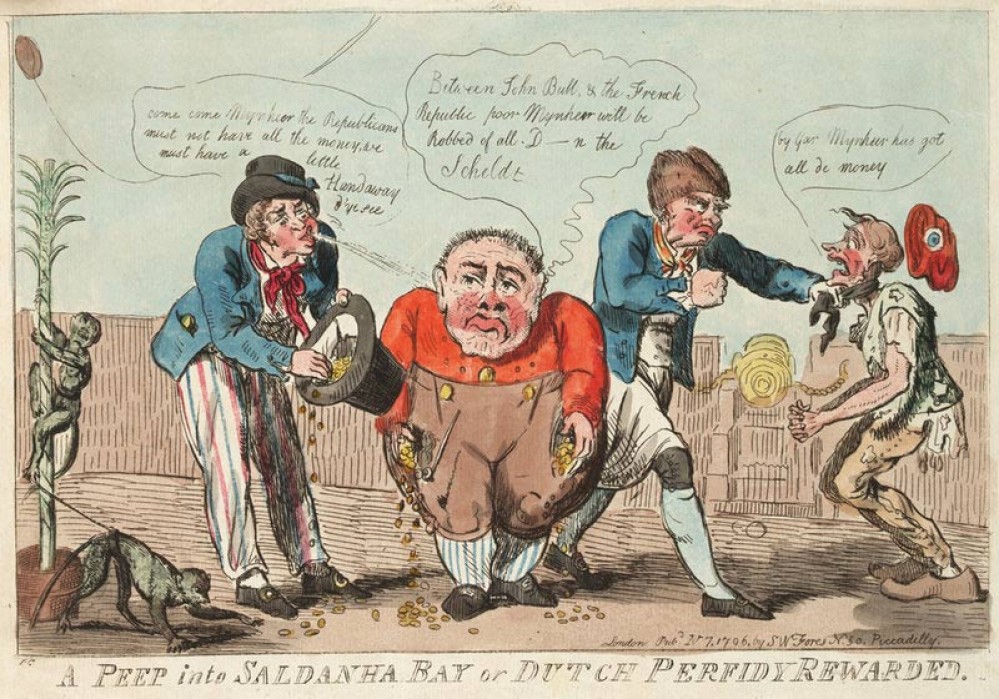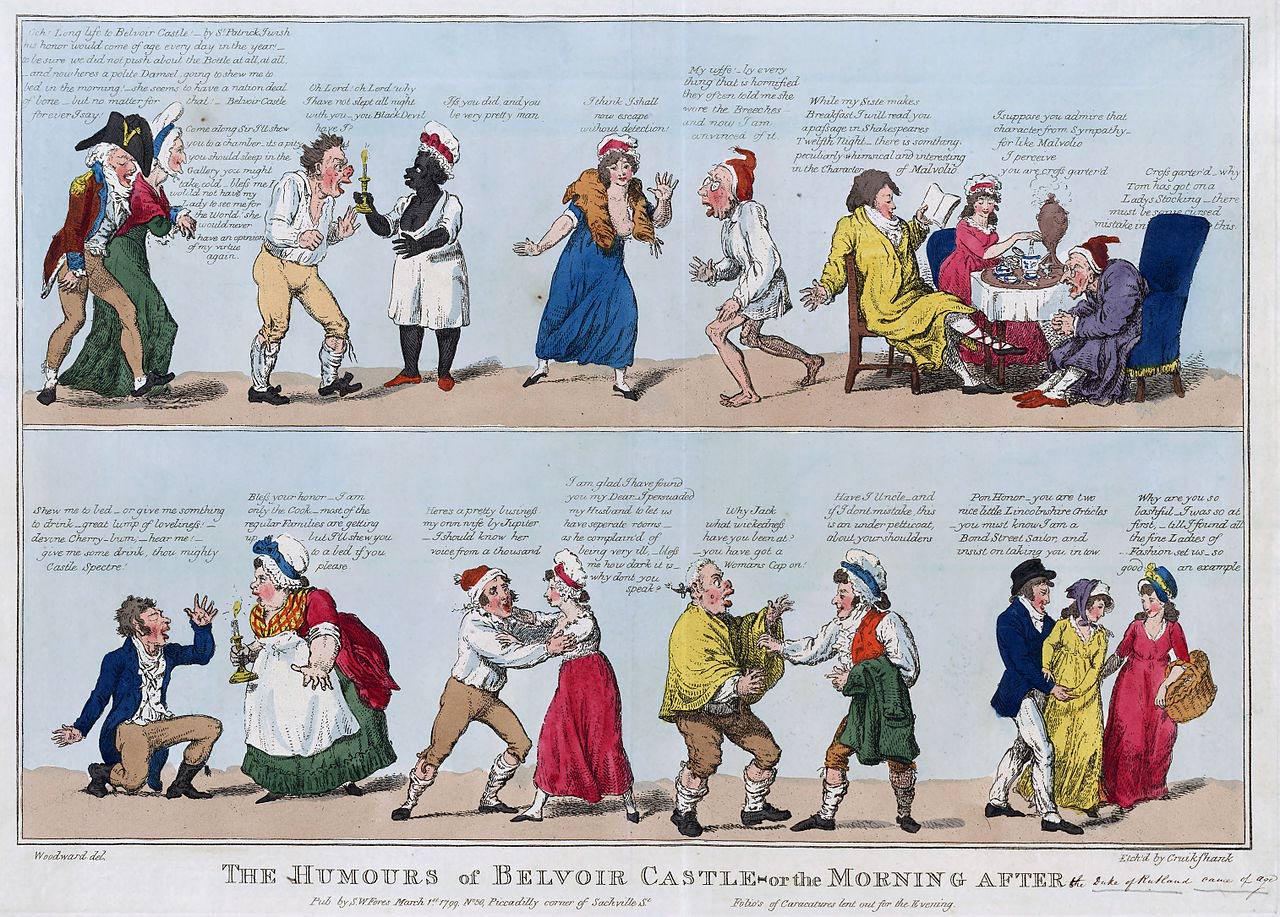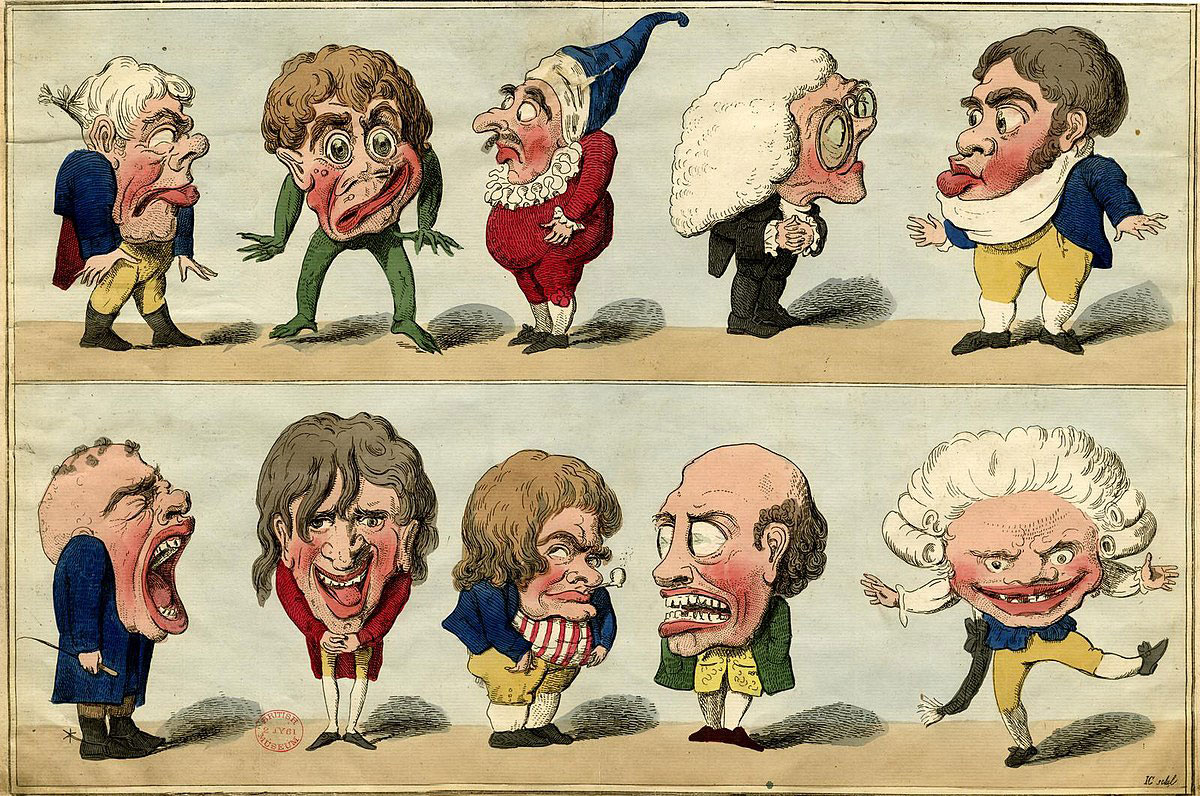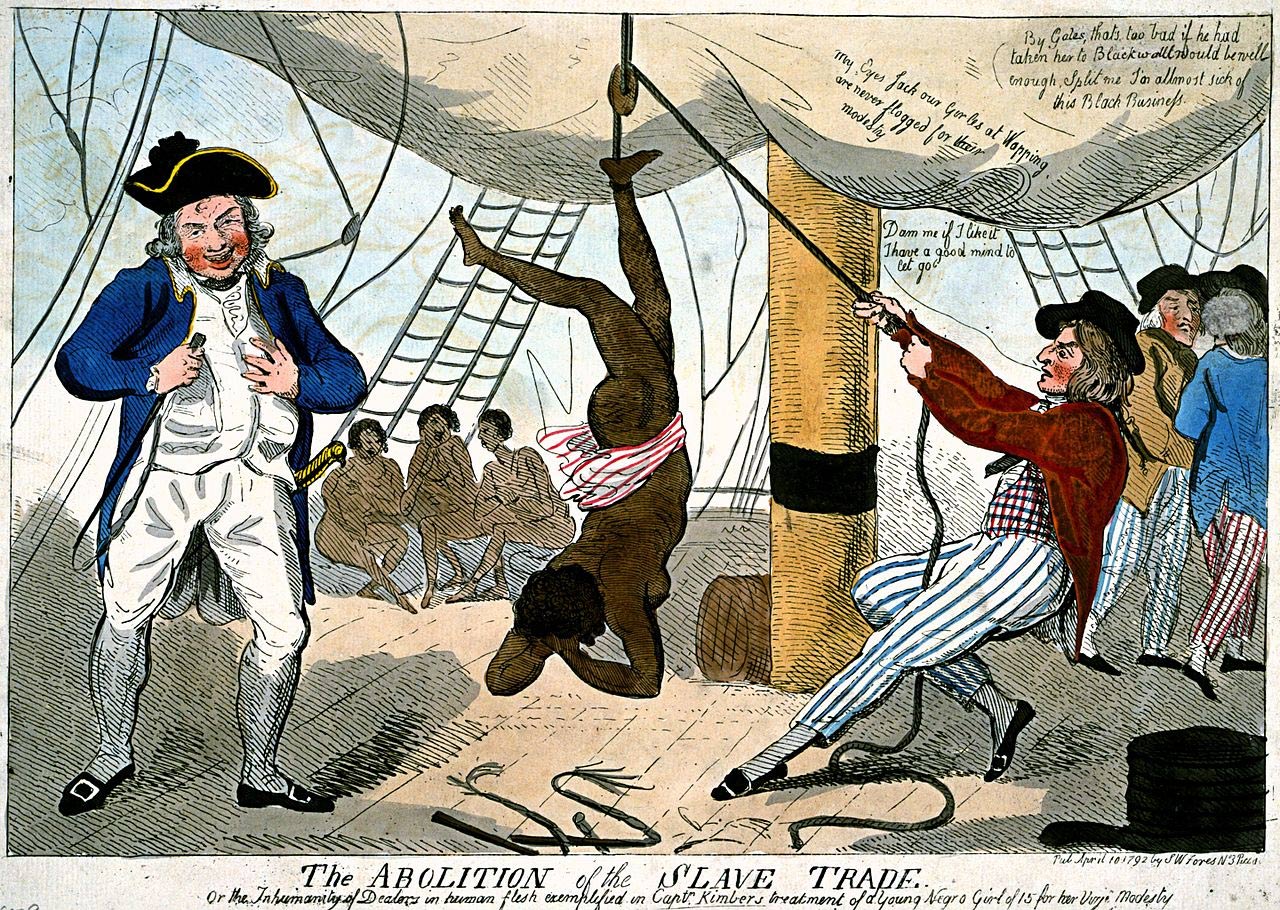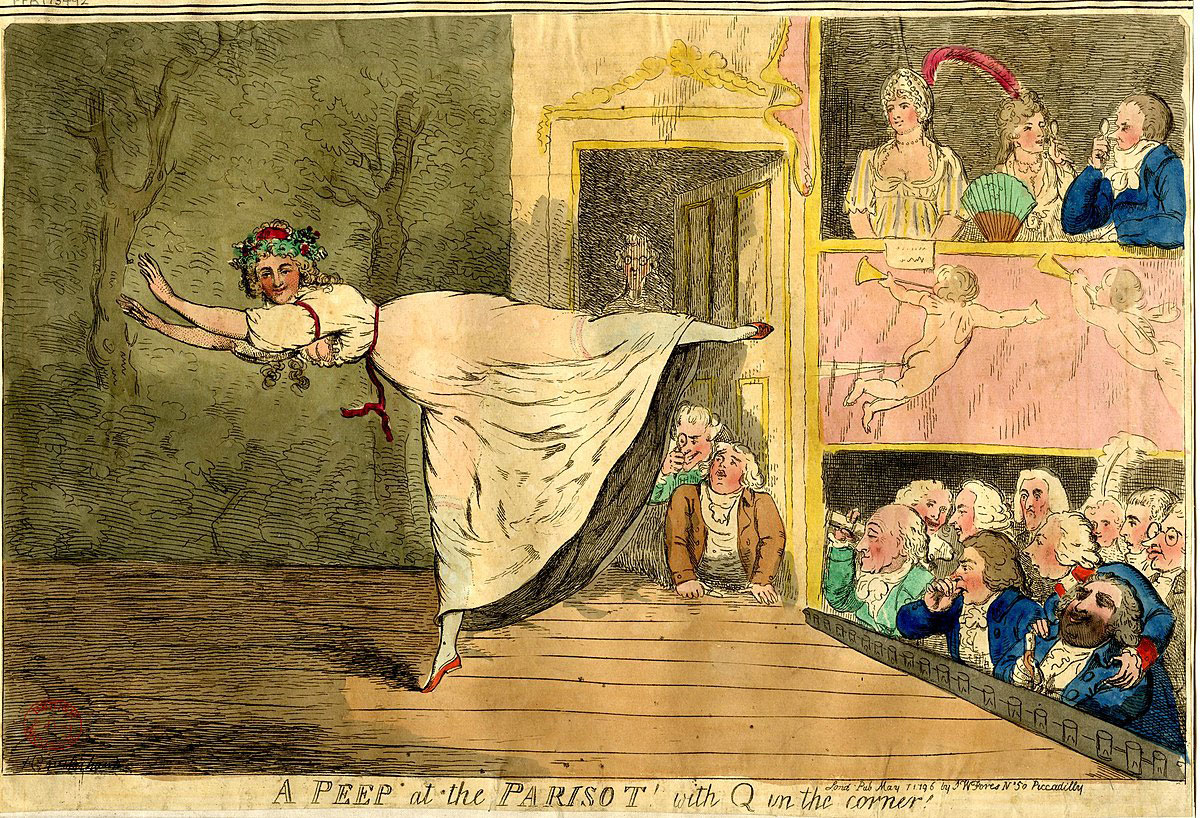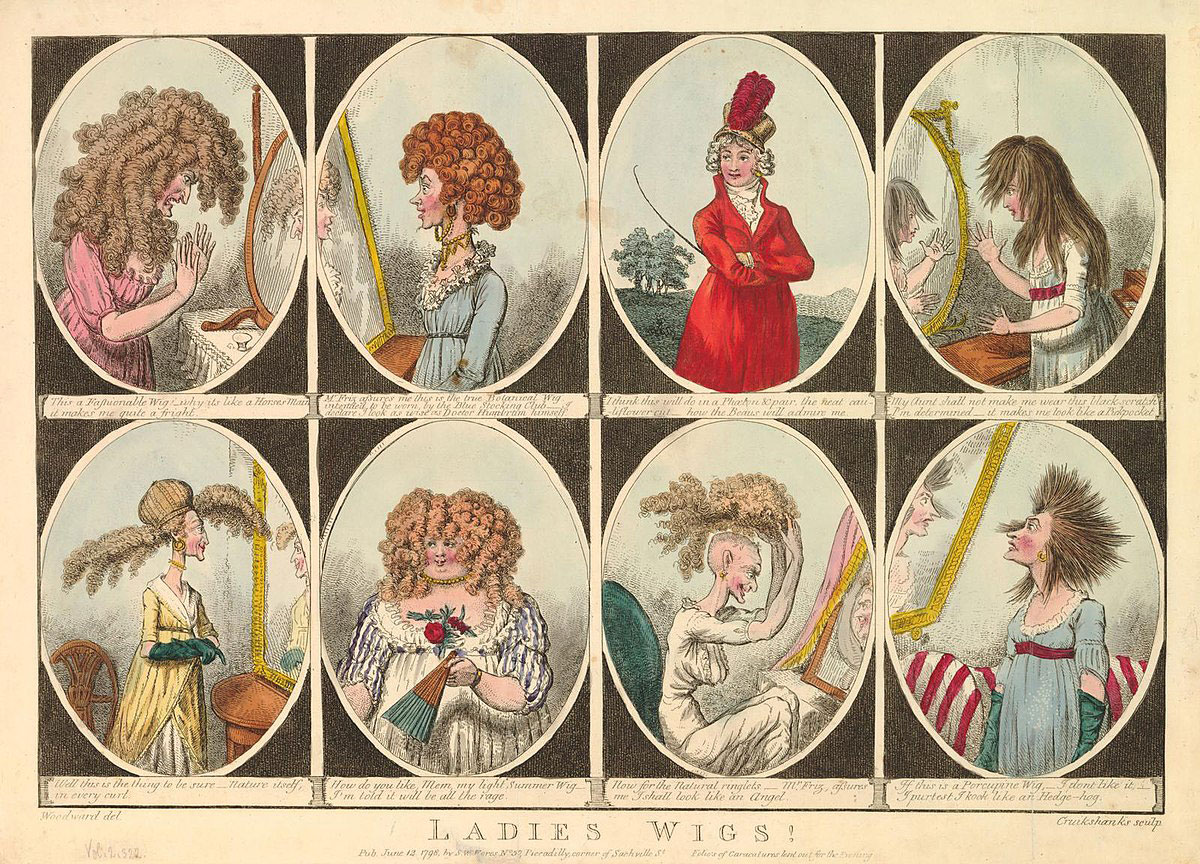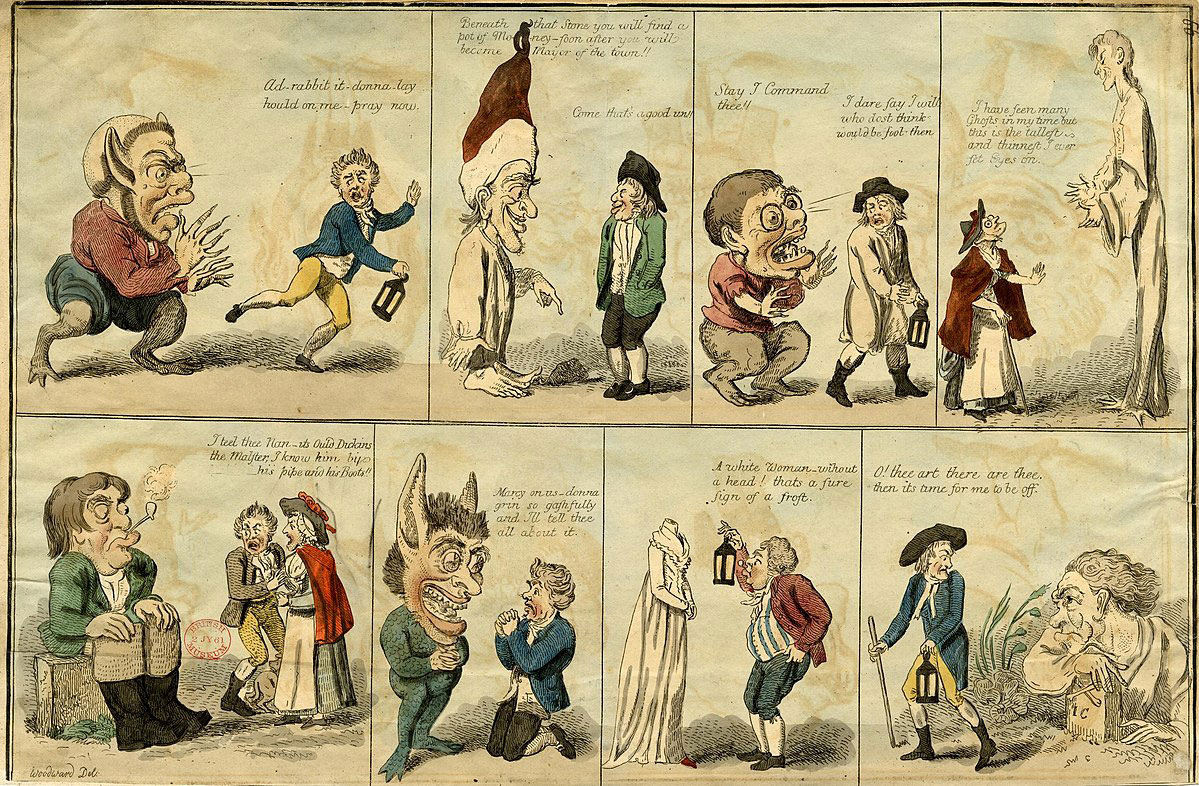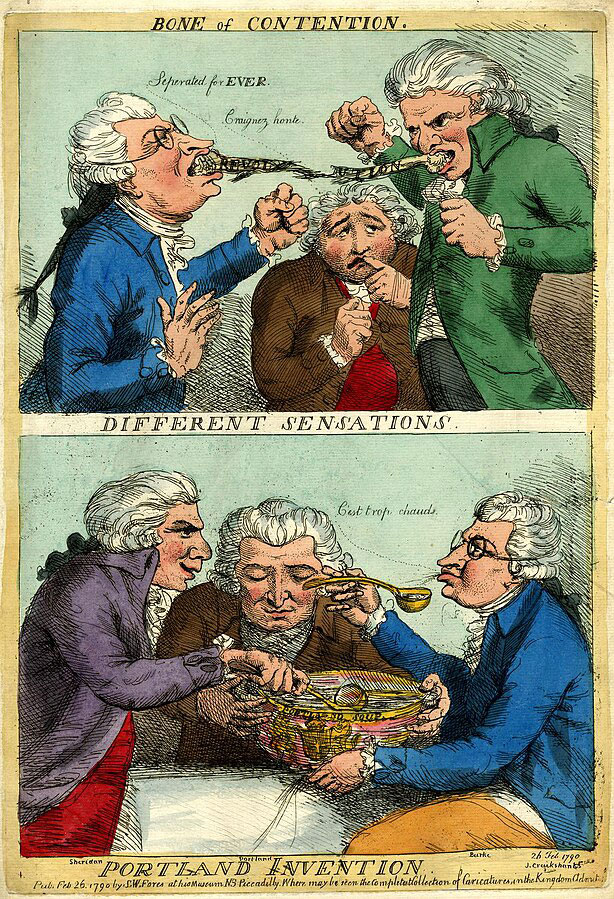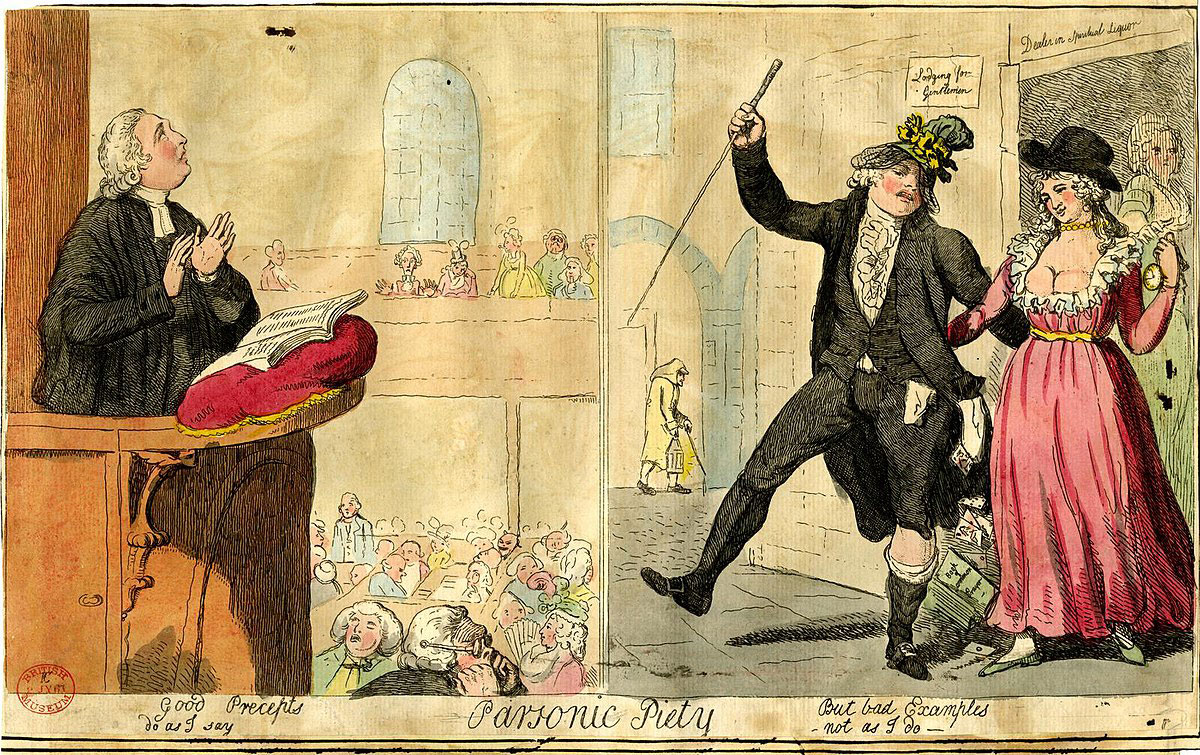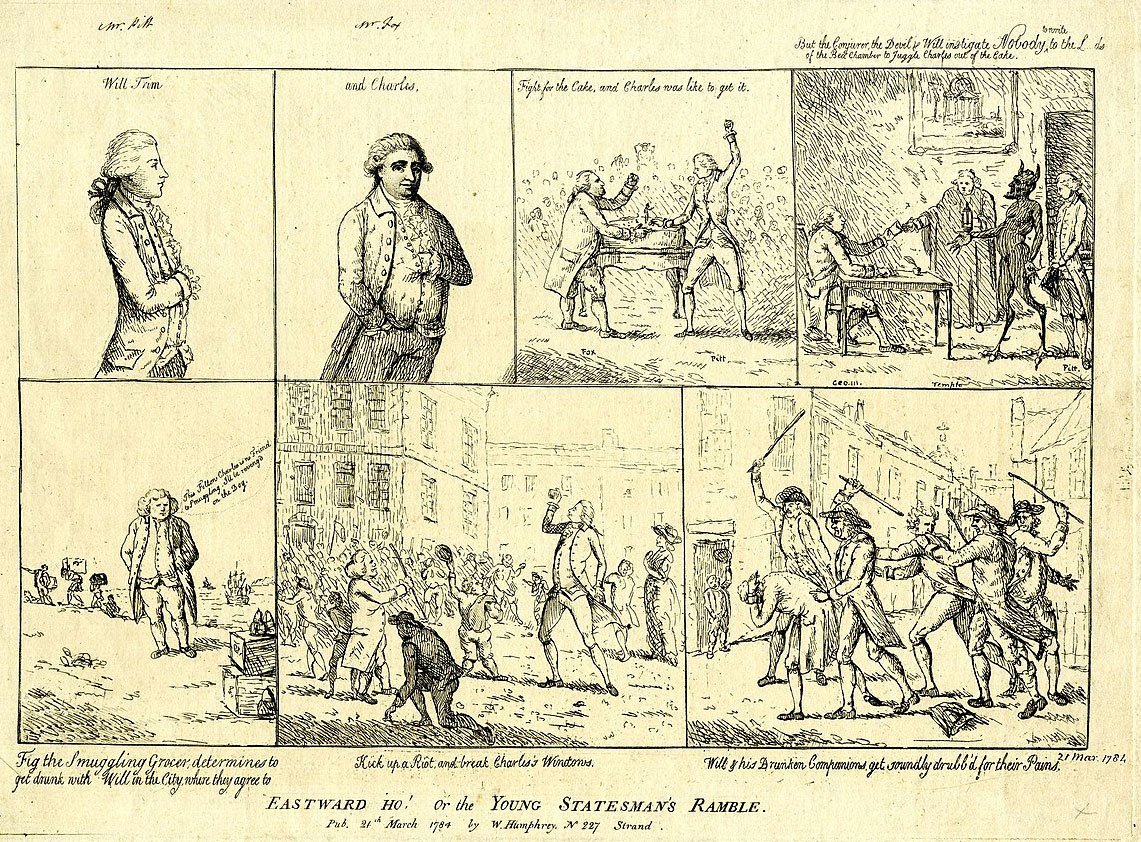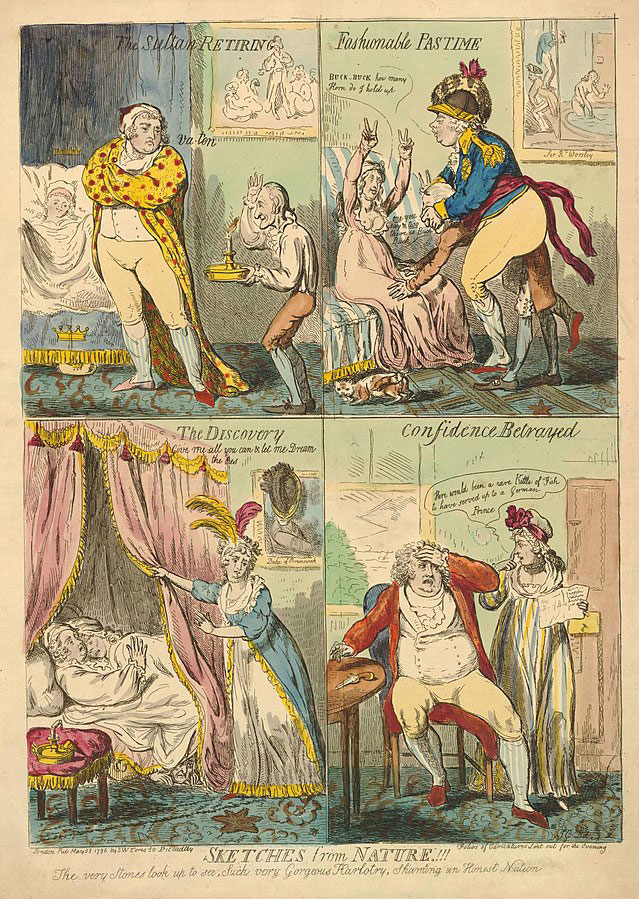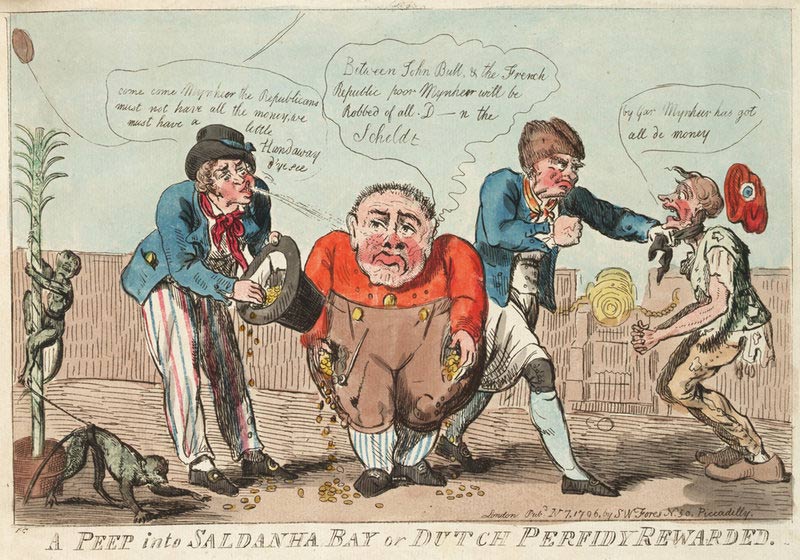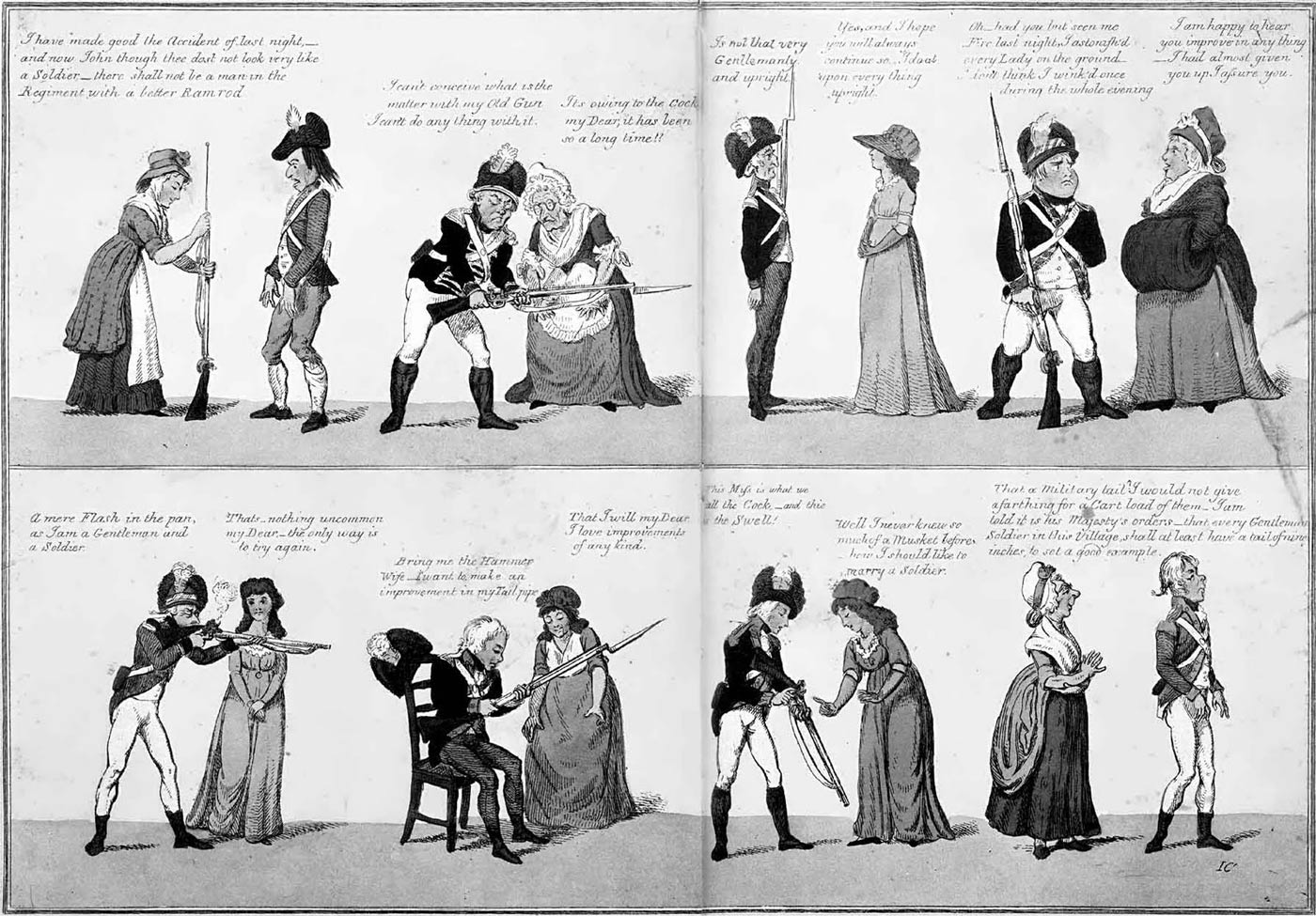'The Humours of Belvoir Castle, or the Morning After', 1799.
Isaac Cruikshank was a late 18th-century and early 19th-century Scottish painter and caricaturist. His cartoons are notable as prototypical examples of comics in their use of speech balloons, caricature, slapstick and occasional sequential narratives. His sons would later become well-known cartoonists in their own right.
Early life and career
Isaac Cruikshank was born in 1764 in Edinburgh, Scotland, as the son of a customs officer. He left the city in 1783 to live in London, where he remained for the rest of his life. A year later, he published his first drawings, all caricatures of Scottish people called 'Scotch Eloquence'. Cruikshank made numerous cartoons poking fun at the London Corresponding Society and Society of the Friends of the People, as well as Napoleon Bonaparte. He had a talent for water color paintings and copper etchings, the latter colored and lettered by his wife, Mary McNaughton. Most of Cruikshank's cartoons were based on designs by George Moutard Woodward and published by S.W. Fores. Some are direct caricatures, like 'A Collection of Hobgoblins' (25 February 1796), featuring various goblins with grotesquely large and ugly heads. 'A New Dutch Exercise' (1 April 1795) shows various stereotypical Dutchmen with ugly faces.
'A Collection of Hobgoblins' (25 February 1796).
The Abolition of the Slave Trade
One of Cruikshank's most important works was 'The Abolition of the Slave Trade' (1792). The cartoon depicted British sea captain John Kimber who, on 22 September 1791, had demanded that a 15-year old African slave girl would dance for him. When she refused, the girl was given several lashes and tied with her leg to a rope. Sailors then suspended her several times in the air, only to suddenly drop the rope so she would smack against the deck. On 27 September, she died from her wounds. The incident was reported to abolitionist William Wilberforce, who led the case against Kimber, who was arrested on 8 April 1792 and put on trial in June. Although he was acquitted, the scandal received a lot of attention and Cruikshank's cartoon actually helped turn public opinion against the slave trade. In 1833, slavery would be abolished in most of the British Empire.
'The Abolition of the Slave Trade', 1792.
Prototypical comics
Cruikshank can also be credited as an early comic strip pioneer. Many of his one-panel cartoons feature grotesquely portrayed people, celebrity caricatures and use speech balloons. He also made sequential cartoons, divided in two strips. Yet in most cases, Cruikshank doesn't exactly follow a narrative. Each gag is a stand-alone situation with different characters, only sharing a thematic connection. Cruikshank simply juxtaposes them. Due to a lack of panels, the modern-day reader sometimes has trouble understanding what character belongs to what scene. Narration and dialogue just float above the characters' heads. Contrary to his one-panel cartoons, Cruikshank barely used speech balloons for his sequential illustrations.
Some of these sequential cartoons poke fun at abstract concepts. In 'The Effects of Falsehood' (1794), for instance, various people are depicted bragging or telling lies. The companion piece, 'The Effects of Truth' (1794), shows that being honest can also bring one into trouble. 'The Effects of Flattery' (1 June 1794) laughs with various attempts at complimenting others. In 'The Effects of Hope' (1794), men and women are portrayed in situations that would indeed require a certain degree of optimism, like hoping that the doctor's bill isn't too expensive. 'The Effects of Prosperity' (1 November 1794) proves that all that glitters isn't always gold. 'Triumph of Temper!!' (1796) shows several people having fierce arguments, temper tantrums and fights. In 'Hunting Piece on a New Construction' (1800), Cruikshank portrays several people on metaphorical hunts, like a hunt for love, fame or money.
'A Peep at the Parisot' (1796).
The characters in Cruikshank's thematic cartoons often comment on (then) current events, like 'Popular Opinions on Public Proceedings' (21 February 1794), 'Altars of Reformation or Voluntary Contributions for Carrying on the War' (20 May 1797) and 'Effects of Peace' (24 July 1797). In 'Female Opinions on Military Tactics' (1798), eight women argue with soldiers about their weapons, equipment or uniform. 'Political Consistency, or Hints for Bad Memory' (1799) tackles contradictory statements by politicians. When England was threatened by a potential invasion in 1796, Cruikshank made 'Who's Afraid?, or The Effects of an Invasion!' (1796) visualizing various people's opinions about this topic. In the nowadays rather sexist 'Hints Towards a Change of Ministry' (1 February 1797), Cruikshank imagines what it would be like if various government positions were fulfilled by women. 'Days of Yore!!!' (16 February 1797) lampoons the idea that "everything was better in the past", while the companion piece 'The Days We Live In!!' (8 April 1797) proves that life in the (then-current) late 18th century isn't exactly better.
Other sequential cartoons by Cruikshank are more timeless and straightforward funny situations, like the self-descriptive 'Six Different Methods of Carrying A Stick With Their Effects' (1 August 1796) . 'Symptoms of Tippling' (1795) tackles alcoholics. 'Ourselves' (1 January 1796) features people who feel proud of themselves, yet are actually ridiculous. In 'A Collection of Ghosts' (25 February 1796), people have witty confrontations with all kinds of ghosts. The phantoms come in many shapes and forms, most with grotesquely large heads. Cruikshank targets gossipers in 'Family Secrets!!' (12 October 1797), while in 'Ladies Wigs' (12 June 1798) he takes the mickey out of the 18th-century wig trend. Love and lust were also a prime comedy target. In January 1796, Cruikshank made several gag scenes about this topic. In 'Symptoms of Love!!' (1796), Cruikshank ridicules declarations of love. 'Symptoms of Matrimony!!!' (1 January 1796) mocks marital bliss and 'Symptoms of Crim. Con!!' (1796) focuses on adulterers.
'A Collection of Ghosts' (25 February 1796).
Professions also lent themselves to observational comedy, like in Cruikshank's 'A School for Parsons' (26 February 1798), 'Yeoman Cavalry'' (1796), 'Military Accidents!' (31 May 1798) and 'Genuine Ortography, or Candidates for Public Flavour' (1798). Each cartoon shows various funny situations regarding one particular job. Cruikshank was an equal opportunity offender, making fun of ordinary jobs (for instance, 'Dog Tax Gatherers In Search of Puppies', 8 May 1796) as high society. In 'The Humours of Belvoir Castle - or the Morning After' (17 March 1799), for instance, various noblemen are shown boozing, partying and suffering from hangovers afterwards.
'Bone of Contention. Different Sensations' (26 February 1790).
Still, most of the cartoons mentioned are yet a far cry away from modern-day comics, since they lack genuine narratives. Closer to our modern definition are Cruikshank's "contrast" cartoons. They typically juxtapose two different situations, divided in two panels. 'French Happiness. English Misery' (3 January 1793) portrays a group of starving Frenchmen fighting over a chicken bone in the first panel. They are "happy" over their desperately-needed culinary discovery. In the second panel, obese Englishmen are finishing a lavish meal. Yet they are "in misery", because the spoiled nincompoops actually regret having "too much food". Luxury and hardship are frequently contrasted in Cruikshank's cartoons. The two-panel 'Bone of Contention. Different Sensations' (26 February 1790), for instance, portrays politicians Edmund Burke and Richard Brinsley Sheridan fighting over food like two fierce dogs. In the second panel, the Duke of Portland interferes and helps them share a large bowl of soup. In the first panel of 'A General Fast In Consequence of the War!!!' (1794) rich people indulge themselves with food, juxtaposed with starving paupers in the second image. A similar critique is found in 'Dividing the Spoil!!' (20 May 1796), in which ladies from high society, including Lady Archer and Lady Buckinghamshire, put their wealth on a table. In the second panel, Cruikshank makes a connection with a bunch of prostitutes doing the same.
'Parsonic Piety' (20 January 1794).
When London was alarmed by reports of a strange pervert attacking women with sharp objects, Cruikshank drew a two-panel sequence commenting on this "London Monster". In 'The Monster Cutting A Lady. Copper Bottoms To Prevent Being Cut' (1 May 1790), the criminal attacks a female passerby in the first panel. In the second panel, a tailor gives a woman a protective dress. Cruikshank also delighted in poking fun at religious hypocrisy. In the two-sequence illustration 'Parsonic Piety' (20 January 1794), a priest presents himself as a virtuous role model, with the subtitle 'Good Precepts. Do As I Say'. However, in the next panel, 'But Bad Examples. Not As I Do.', he leaves a brothel, with a prostitute under his arm.
'Eastward Ho!, Or the Young Statesman's Ramble' (28 March 1784).
Cruikshank also drew a few longer narrative sequences. 'Eastward Ho!, Or the Young Statesman's Ramble' (28 March 1784) portrays Prime Minister William Pitt the Younger and his political rival Charles James Fox in seven etched images. The first two panels serve as introductions of the two protagonists. We then see Pitt and Fox squabble over a cake, with Fox getting the upper hand. However, King George III and the Devil support Pitt's claims to this cake. The story continues with a grocer complaining about Fox' policies regarding smuggling. When Pitt returns from the Grocer's Hall, he joins a riot, throwing stones at Fox' windows. Yet, Pitt and other rioters are then thrashed away by men with sticks. The anti-Pitt propaganda tale is easy to follow, due to clearly divided panels. Yet the narration and dialogue are not consistent in their presentation. Sometimes text floats above characters' heads, other times it is printed above or underneath the panels.
In Cruikshank's 'He Would Be A Soldier, or the History of John Bull's War-like Expedition' (1 July 1793), the national personification of the United Kingdom - John Bull - goes to war, but returns home poor, crippled and with loss of an eye. The story is told in seven individual scenes, but without panels. Cruikshank plagiarized this entire cartoon from James Gillray's 'John Bull's Progress', printed a month earlier on 3 June 1793. However, Gillray told the entire story in only four scenes, with clearly divided panels.
'Sketches From Nature!!!' (28 May 1796).
Cruikshank's 'Sketches From Nature!!!' (28 May 1796) portrays prince George (future George IV) and his mistress, Caroline of Brunswick, during their various affairs. The four-panel illustration follows a clear narrative, while making occasional use of speech balloons and handwritten texts floating above characters' heads. In 'This Is The House For Cash Built!' (1797), Cruikshank shows various people and objects that all contributed to the wealth and corruption within the Treasury. The entire sequence is narrated while spoofing the nursery rhyme 'This Is the House That Jack Built'. 'A Specimen of Scottish Modesty' (5 February 1798), portrays Henry Dundas, 1st Viscount Melville in various satirical situations. Almost a sequential work is 'Progress of Drunkenness' (1800), in which various stages of intoxication are ridiculed. Yet, rather than follow one drunk, Cruikshank shows different boozehounds in gradually more embarrassing situations. Of special note is the undated 'A Back-Side and Front-View of a Modern Fine Lady', portraying a nude woman going out for a swim at the beach. The picture story has no punchline, political subtext or dramatic development and basically serves an erotic function.
'A Peep Into Saldanha Ray, or Dutch Perfidy Rewarded', 7 November 1796. The cartoon refers to a failed attempt by the Dutch marines to recapture the Dutch Cape Colony (nowadays South Africa) from the British. While docked at Saldanha Bay for badly-needed fresh water supplies, the Dutch were ambushed by the British and instantly surrendered. In the cartoon, two Englishmen in blue costumes rob an obese Dutchman and scrawny Frenchman of their money (at the time, the Netherlands were a puppet state of France). The Frenchman wears a Pyrrhic cap, while to the left is placed a Freedom Tree, both symbols of the French Revolution.
Graphic contributions
While best-known for his caricatures, Cruikshank also illustrated books about theater, song lyrics and George Shaw's book series 'General Zoology' (1800-1826).
Final years and death
In 1803, Napoleon declared war on Great Britain. Cruikshank joined a group of military volunteers in Bloomsbury. In 1811, he took part in a drinking contest and was declared the winner afterwards. Unfortunately he collapsed from alcohol poisoning, dying half a week later. His sons, George Cruikshank and Isaac Robert Cruikshank, were also famous cartoonists.


